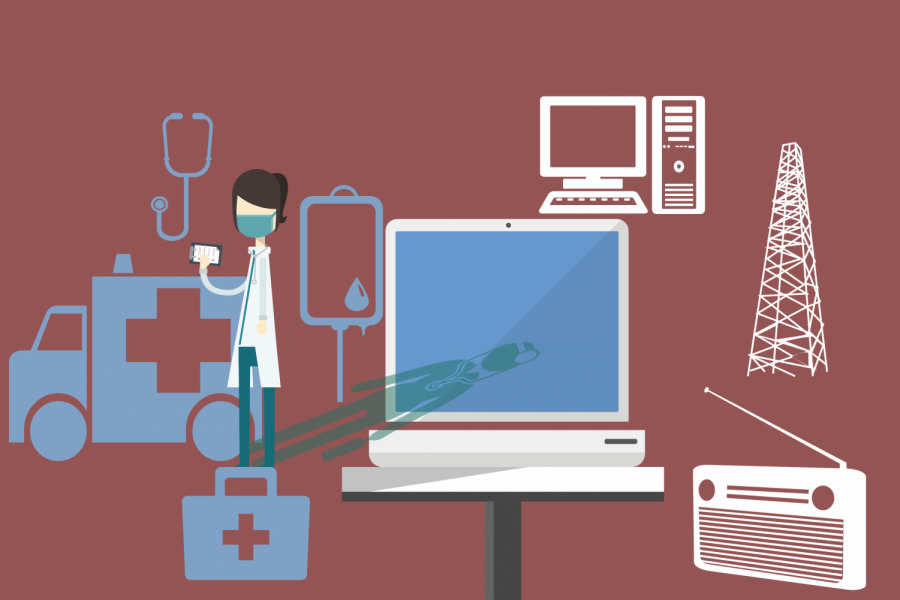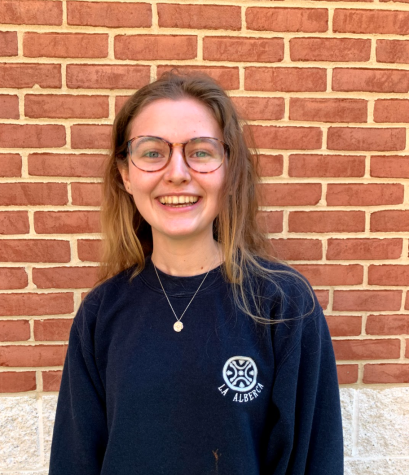Students gain real-world healthcare experience through teleshadowing
For both high school and college students, learning from accredited professionals increases the likelihood of being accepted into top-ranked medical schools — participation in these programs is crucial for any prospective doctor.
May 7, 2021
Junior Asra Shaikh’s pen darts across her notebook page, jotting down information on metastatic breast cancer. Shaikh listens to Dr. Mary DeShields, the medical director of oncology at the University of Maryland’s Shore Regional Cancer Center, in a Zoom meeting. While Shaikh’s bedroom is miles away from UMD, it feels like she and DeShields are only a few feet apart.
Going into her junior year, Shaikh had initially planned to volunteer at a hospital and participate in a summer internship with a doctor in order to gain practical experience in the healthcare field.
Then, the coronavirus pandemic struck, resulting in the cancellation of many in-person medical programs. Shaikh, like countless other students, had no concrete plan for work experience — until a friend notified her about a website that offered “teleshadowing,” an opportunity to virtually learn from medical professionals about their work.
“I was really stressed out; I’ve had a lot of anxiety, especially this year,” Shaikh said. “This program was a big opportunity because for me, everything that I planned was cancelled. So this was really nice for me to get.”
TeleShadowing, the program Shaikh participates in, provides a virtual clinical apprenticeship experience, where healthcare professionals from across the country stream themselves delivering presentations on a variety of disciplines over both Zoom and YouTube Live. Prospective viewers first complete an application, then add the program to their Google Calendar to receive links to streams and reminders for the weekly sessions.
In February 2020, University of Maryland sophomore Minahil Cheema and a team of students founded the program after learning that many students struggled to find shadowing opportunities in light of the coronavirus pandemic. For both high school and college students, learning from accredited professionals increases the likelihood of being accepted into top-ranked medical schools — participation in these programs is crucial for any prospective doctor.
The program has made access to educational opportunities during the pandemic to anyone interested its top priority, Cheema said.
“We work together, and our mission is basically to work on a disparity in how a lot of pre-health students have not been able to get much exposure due to the pandemic,” Cheema said. “We wanted to make this free program for all students, kind of similar to a Khan Academy format, where education is free for all.”
During the two-hour-long lectures, presenters share a runthrough of their career journey, from their humble beginnings as students, similar to those watching the streams, to their current medical field position. The presenters also provide detailed information about their specific field of medicine. Viewers are encouraged to ask questions in the attached chat, which presenters answer at the end of each session. For those that are unable to stream live, recordings are posted on the website for viewing access. In order to receive certification for shadowing hours, viewers must earn a 70% or higher on a certification quiz that includes questions on the information covered in the presentation.
Through listening to professionals’ stories in the medical field, Shaikh has become less stressed about the path to the career she is interested in pursuing.
“Most of the people who have spoken, when they’re talking about how well they did as a pre-med, they all talk about how you can redo the hard classes if you don’t get a good grade,” Shaikh said. “I found it really encouraging that a lot of them say that you don’t have to be a genius really to be a doctor — as long as you’re interested in it, that’s all you really need.”
Junior Giulia Baroldi was inspired by various speakers’ passions for their respective fields of study, and the compassion they speak about having for their patients. During one lecture that Baroldi recalls, a speaker mentioned the mental toll that work in oncology can take on practitioners. Baldori felt touched by her story, and it opened her eyes to the emotional struggles that physicians face in their field, she said.
“They’re showing a lot of devotion to their jobs and a lot of commitment to their patients,” Baroldi said. “It shows how emotionally weighing those are, and how being a physician can also have an emotional impact on your life as well.”
For Shaikh, one of the most fascinating pieces of information she found out through teleshadowing was the interconnectedness of the healthcare industry — often, those with different specialties will work alongside one another to complete a specific project.
“I honestly found the last [presentation] really interesting because [the lecturer] went into not just her case studies, which were interesting, but she also talked about all the different people she works with,” Shaikh said. ”For the diagnosis process and the treatment process, there’s so many different people involved for the testing — not just nurses, but people who actually specialize in just testing.”
Cheema not only hopes that students can gain experience and shadowing hours through the program, but also a chance to better understand what it means to be a healthcare professional.
“There’s a reason why we’re required to have these hours, to really have a reason to find our ‘why,’” like: ‘why do we want to pursue this profession? Why are we doing this?’” Cheema said. “The application’s really based on this reflection, of how these experiences have added up to thousands of hours of clinical shadowing, clinical experiences, patient care experiences; how have these all added up to why you want to be what you want to be.”











